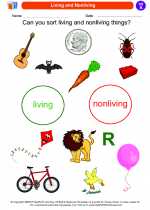Bones
Bones are an essential part of the human body's structure and function. They provide support, protect vital organs, and allow for movement. In addition to their structural role, bones also produce red and white blood cells, store minerals such as calcium and phosphorus, and provide a site for muscle attachment.
Types of Bones
There are two main types of bones in the human body: compact (cortical) bone and spongy (cancellous) bone. Compact bone is dense and strong, providing support and protection. Spongy bone is less dense and has a honeycomb-like structure, allowing for the storage of bone marrow and the transfer of forces during movement.
Bone Structure
Bones are composed of collagen, a protein that provides flexibility, and calcium phosphate, a mineral that gives bones their strength and hardness. The basic unit of bone is the osteon, which consists of concentric layers of bone matrix surrounding a central canal containing blood vessels and nerves. This structure allows for the transport of nutrients and waste products within the bone.
Growth and Development
Bones undergo a process of growth and development, particularly during childhood and adolescence. The growth plates, or epiphyseal plates, located at the ends of long bones, are responsible for longitudinal bone growth. As a person reaches adulthood, these growth plates close, and bone growth ceases. However, bones continue to undergo remodeling throughout life, with old bone tissue being replaced by new bone tissue in a process known as bone turnover.
Common Bone-Related Terms
- Calcium: A mineral essential for bone strength and health.
- Osteoporosis: A condition characterized by decreased bone density and increased risk of fractures.
- Fracture: A break in the continuity of a bone, often caused by trauma or excessive force.
- Bone Marrow: The soft, spongy tissue found in the cavities of bones, responsible for the production of blood cells.
Study Guide
Here are some key points to remember when studying bones:
- Identify the functions of bones in the human body.
- Describe the differences between compact and spongy bone.
- Explain the composition and structure of bones.
- Discuss the process of bone growth and development, including the role of growth plates.
- Define common bone-related terms such as calcium, osteoporosis, fracture, and bone marrow.
Understanding the anatomy and physiology of bones is crucial for comprehending the human body's overall structure and function. By mastering these concepts, you will gain valuable insight into the importance of bone health and its impact on overall well-being.
.

